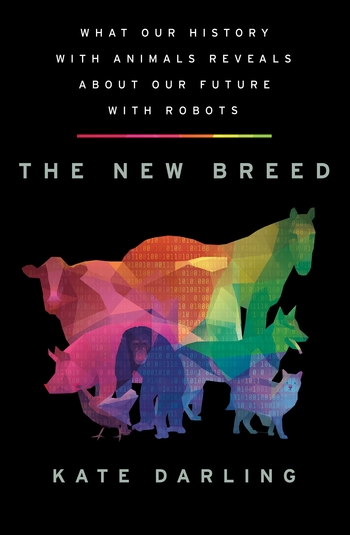Humans and Robots: Understanding Our Connection
Kate Darling provided QDT an excerpt from her book The New Breed, where she discusses human’s connection with robots and how we can understand it better by looking at our relationship with animals/pets, as well as what robots can teach us about ourselves.
With a big surge of interest in artificial intelligence and robotics in the past few years, the press is eagerly speculating about our future with robots, with headlines like “Will Robots Steal Your Job?,” “The Robots Are Coming, Prepare for Trouble,” and “Welcome, Robot Overlords. Please Don’t Fire Us?” In 2013, a widely promoted University of Oxford study predicted that almost half of all employment in the United States was at high risk of being replaced by robots and AI within ten to twenty years, and others have predicted even greater vulnerability. Technology is advancing at a breathtaking pace, they say. And robots, the story goes, will soon be able to do everything that humans do, while never tiring, never complaining, and working twenty-four hours a day. A 2017 Pew Research study showed that 77 percent of Americans think that during their lifetime, robots and AI will be able to do many of the jobs currently done by humans. According to Pew surveyor Aaron Smith, most people “are not incredibly excited about machines taking over those responsibilities.”
Buy Now

Not only are we on the cusp of the robot job takeover, say the headlines; some believe the robots will take over more than our jobs. Artificial intelligence, they claim, is on the threshold of outsmarting us. Respected thinkers have raised concerns about artificial superintelligence, predicting that robots could outpace human intelligence and wreak havoc on the world. From Stephen Hawking to Elon Musk, these high-profile individuals have sounded the alarm on what they view as the greatest threat to humanity, fanning the flames of latent fears. It’s easy for people to get on board with the robot takeover narrative, at least in the West. After all, most of our mainstream science-fictional portrayal of robots has been around precisely this topic, from 2001: A Space Odyssey to Ex Machina.
New technologies often inspire concern, but perhaps not quite in the same way as robots. According to tech philosophy and ethics scholars Peter Asaro and Wendell Wallach, our robot narratives throughout history are about good robots turning evil, either turning against their genius creators, like Frankenstein’s monster, or turning against human civilization at large. Is this because robots inherently pose this threat? It’s worth noting that this fear seems culturally specific. Karel Čapek’s famous 1920s play about the uprising of robot factory workers was performed in both Western countries and Japan. But while the West embraced its negative messages in our robot narratives, Japan gravitated toward friendlier robot portrayals in popular culture, like the famous cartoon Astro Boy. In the 1960s, Japan began to view robots as a potential driver of productivity and growth, and when robotics played a big role in Japan’s economic revival, it inspired a positive image of robots as nonthreatening and helpful to humans.
Many of my colleagues in robotics are weary of the Western trope that the robots will take all the jobs and become our overlords. The news media often reports on their work in ways that are clickbaity and alarmist, complete with an obligatory picture of the Terminator. I’ve heard curse words directed at the public intellectuals who extol the dangers of robot takeovers, and complaints that the big-name alarmists are mostly physicists, philosophers, and CEOs who don’t have in-depth knowledge of artificial intelligence or robotics. But the Cassandras tend to shoot back that the people who actually work in the field aren’t the best judges of broader trends. One night at a conference, I watched Sam Harris, a writer and philosopher with a degree in neuroscience, get on a small stage in front of about a hundred roboticists from some of the top research centers in the world and argue that artificial superintelligence was a significant and likely danger to humanity, and that the technologists who disagreed weren’t able to see the forest from their position among the trees. The ensuing uproar was monumental.
I was still thinking about his words the next day, as I rested my head against the back of my seat in a fancy black car driving smoothly down the empty early morning highway toward the airport. “What do you think about self-driving cars?” I asked the young, clean-shaven driver in a black suit and tie. He kept his eyes on the road. He told me that he had gone through a year of training to be a professional black-car driver, a lot of which was about more than just driving. He said he was trained to handle unanticipated situations, like protecting his passengers from attacks or violence, and that, if we got into an accident, his first aid skills could save my life. He asked me, solemnly: “Can a robot car do CPR?”
From THE NEW BREED by Kate Darling. Copyright © 2021 by the author and reprinted with permission of Henry Holt & Co.





